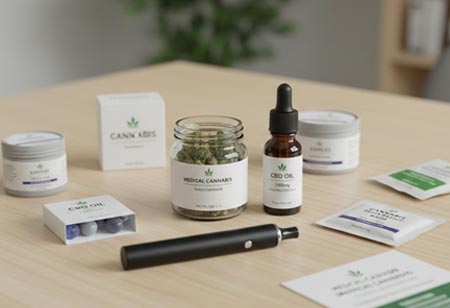Thank you for Subscribing to Cannabis Business Insights Weekly Brief
The Dos and Don'ts of Cannabis Transport
Regulations surrounding the transportation of cannabis vary widely depending on location.

By
Cannabis Business Insights | Monday, January 06, 2025
Stay ahead of the industry with exclusive feature stories on the top companies, expert insights and the latest news delivered straight to your inbox. Subscribe today.
Transporting cannabis requires careful planning, adherence to regulations, and a commitment to safety and compliance.
FREMONT, CA: Navigating the roads of cannabis transportation is no small feat, with the patchwork of regulations varying from place to place. Whether a licensed distributor, a dispensary owner, or simply someone carrying cannabis for personal use, it's vital to know the laws that govern the journey of this sought-after plant. Transporting cannabis necessitates specific licenses or permits, so make sure that the company has the appropriate licenses to transport cannabis products legally. In many areas where cannabis is permitted for either medical or recreational purposes, transportation plays a vital role in the industry. It's essential to be knowledgeable about the local, state, and federal laws that regulate the movement of cannabis.
Cannabis products are sensitive to environmental factors such as temperature, humidity, and light. Appropriate packaging and storage are essential to maintain the quality and potency of the product during transportation. Invest in suitable containers that offer protection against moisture, light, and physical damage. While cannabis may be legal in certain areas, it's still subject to stigma and scrutiny. When transporting cannabis, use discreet packaging that doesn't draw attention to the contents. Plain, odor-proof containers are preferable to flashy packaging that could attract unwanted attention. Cannabis products are valuable commodities, making them potential targets for theft.
Implement robust security measures when transporting cannabis, including GPS tracking, secure storage compartments, and trained personnel. Follow established transportation protocols to the letter. It includes maintaining detailed inventory records, adhering to designated routes, and complying with transportation timelines. Transporting cannabis across state lines, even between two states where it's legal, can be fraught with legal complications. Federal law still classifies cannabis as a Schedule I controlled substance, making interstate transportation illegal under most circumstances. Understand the implications of transporting cannabis across state lines and seek legal counsel if necessary.
Anyone involved in the transportation of cannabis should receive comprehensive training on compliance, security, and safety protocols. Ensure that employees understand the legal requirements, proper handling procedures, and emergency protocols in case of accidents or incidents during transportation. Keep meticulous records of all cannabis transportation activities, including manifests, invoices, shipping logs, and security footage if applicable. Documentation serves as a vital tool for demonstrating compliance with regulations and resolving any discrepancies that may arise. Stay informed about changes to local, state, and federal laws governing cannabis transportation.
Join industry associations, attend conferences, and engage with regulatory agencies to stay ahead of regulatory developments. Have contingency plans to address vehicle breakdowns, accidents, or security breaches. Promptly report any incidents to regulatory authorities and take corrective action as needed. Prioritize transparency, accountability, and professionalism to uphold the integrity of the cannabis industry while ensuring the safe and reliable delivery of cannabis products to consumers. By implementing robust security measures and staying informed about regulatory changes, you can successfully navigate the complexities of cannabis transportation.






